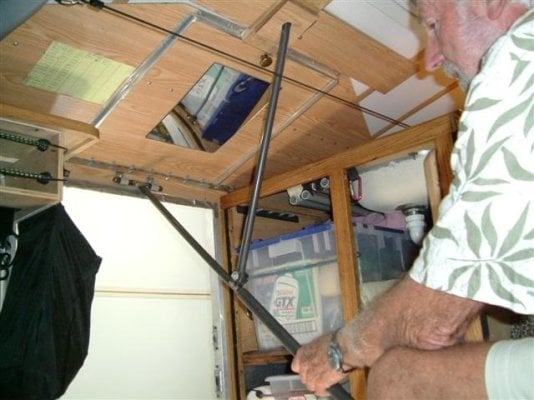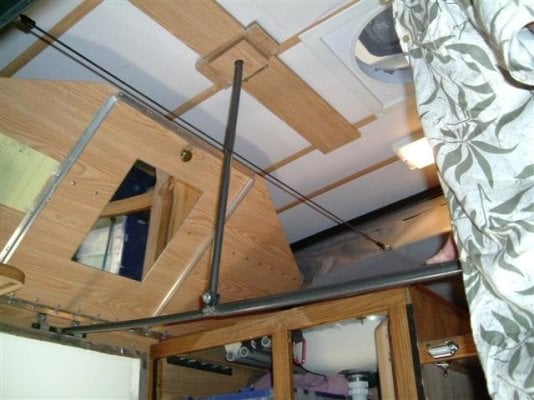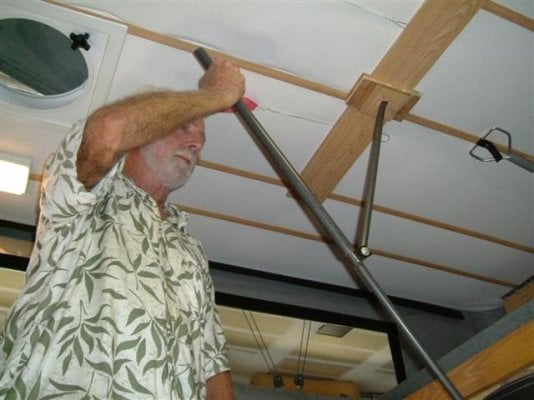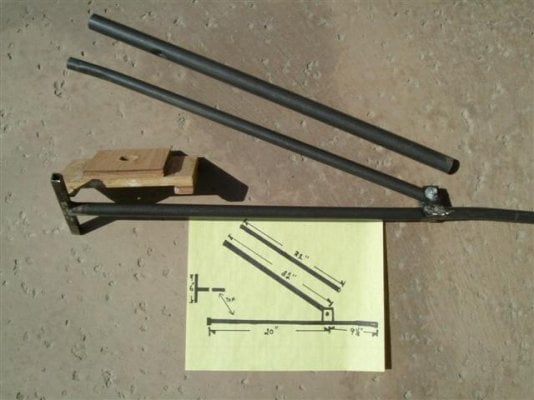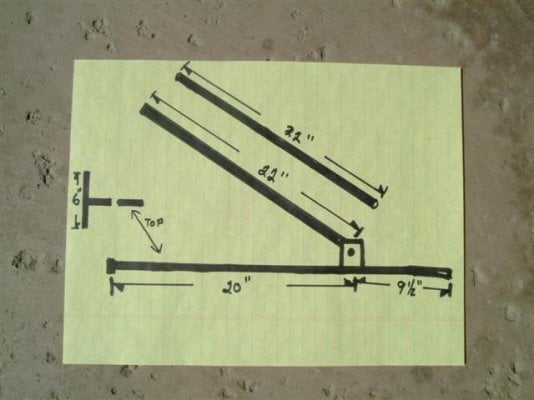Weight On Roof
Thanks Ben. Good idea to emphasize the point with folks!
Yes! as you suggest, getting the darn stuff off the roof is a difficult job, unless you happen to carry a “6 foot step ladder” with you! What my girlfriend and I found works, to some extent, is to throw my 3 inch wide, thirty foot long recovery strap over the roof, and drag it back and forth. You can drag off a lot of the snow that way. Of course, the roof vents get in the way a bit, but you can get over them.
Thanks DLN, and thanks for the calc’s. Did darn near feel like a “ton” of bricks!
Based on your numbers DLN I did a real rough, I emphasize rough, calc’ on the lifting device.
What we’ve basically got here is a …Second Class Lever.
Based on the sketches it appears that the lengths of the lever arms, from fixed fulcrum to vertical pole pivot (load) to the handle (effort) end are approx’ the same. Therefore the actual mechanical advantage, or leverage ratio of the lifting device appears to be very near 1:1. So…a person lifting or lowering the roof, unfortunately, is still going to have to deal with very high forces. If you figure half the roof you are lowering is going to weigh approx’ 875 lbs (half the 1750 lbs), then that lever is going to see 875 lbs and could still get away from you real quick and do serious hurt…!! It figures that with the lifting device you will still be dealing with the same weight (lifting or lowering) equal to approx’ half the total weight that’s up on the roof. Assuming the load is pretty evenly distributed.
So… while the actual lifting effort may be the same with or without the device, there’s no question it’s a great idea and that it will make it a great deal more comfortable, efficient and “controllable” way to raise or lower the roof, which will make it “feel easier” to handle somewhat slightly heavier loads.
lq, if I am missing something in the numbers, or…you have differing numbers, please let us know. I am in no way intending to be critical or offend!
Regards…Coop

